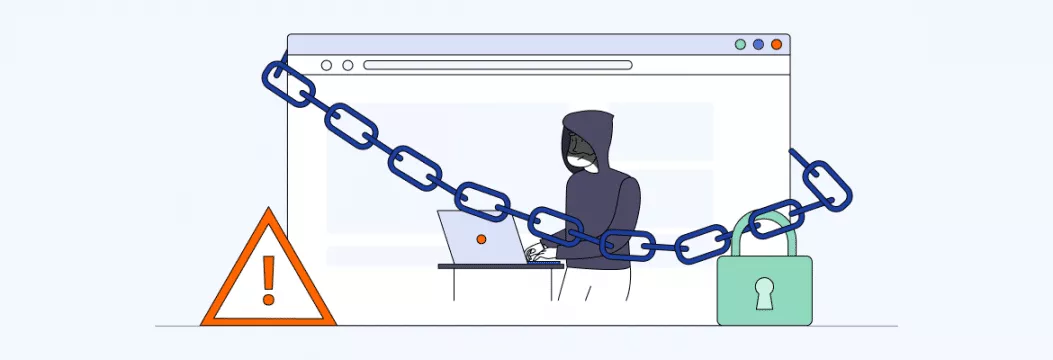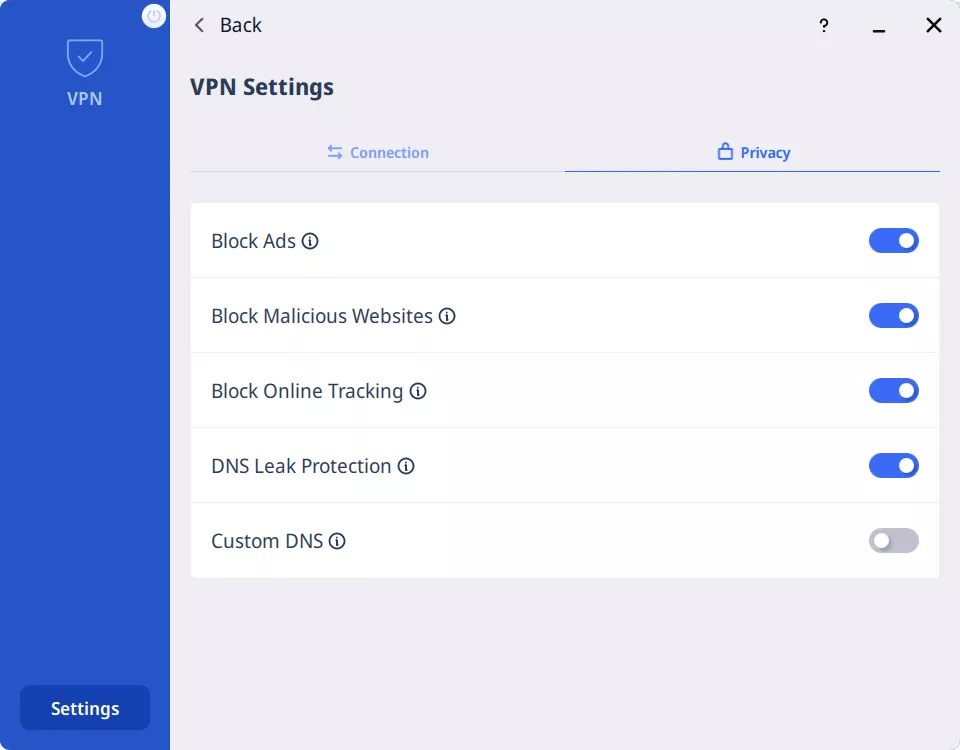Better to Prevent: What Is a Browser Hijacker?

Browsers are our gateway to the wild, wild web. But sometimes browsers can act wild wild themselves. Seeing a strange search engine instead of your homepage? Or lots of annoying ads all over the page? Yeah, your browser might have been hijacked. Read along to find out all about browser hijackers.
What is a browser hijacker?
A browser hijacker is a piece of malicious software (malware) that changes a web browser’s settings without user’s permission. It usually comes in the form of a browser add-on or extension. Sometimes called a browser redirect virus, a browser hijacker leads the user to unwanted and (oftentimes) malicious websites.
Browser hijackers exist for two main reasons:
- Generating ad revenue. You are redirected to pages with ads, which increases ad revenue for whoever is operating these sites.
- Collecting sensitive information. Some hijackers install spyware to gather data about your browsing history and online habits. This can lead to cyberattacks, including session hijacking, or your data being sold to third parties.
Browser hijacker examples
Some common examples of browser hijackers include:
- Ask Toolbar — search tool that changes your browser homepage
- RocketTab — an adware program that shows pop-up ads on web pages you visit
- GoSave — claims to offer special discounts while you shop online, but really just displays unwanted pop-ups
- CoolWebSearch — an aggressive hijacker that installs suspicious bookmarks and creates shortcuts on your desktop to gain sensitive data
- Coupon Server — shows pop-up boxes containing “coupons,” comparative shopping, and sponsored links that lead to more adware
Browser hijackers on Mac
Apple’s operating system is quite different from Windows or Android. So, browser hijackers targeting Macs are different. Mac users should look out for the following toolbars: Search Baron, Safe Finder, Trovi, Weknow.ac, Bing Redirect.
What can a browser hijacker do?
Many browser hijackers are downloaded unintentionally by users and are often bundled with free software. They can also emanate from shareware, adware, and spyware infections.
Some hijacking happens on a small scale, only making a small and annoying change. For example, they could add an unwanted toolbar to your browser. However, more dangerous hijackings can redirect victims to dangerous websites, possibly to steal the passwords and user credentials. This malware can also contain spyware that collects sensitive data and extorts victims to unlock it or sell it to malicious third parties.
How do you check if your browser has been hijacked?
Your browser being hijacked is a bad thing, of course. But the good news is that you can easily spot the problem and start fixing it at once. These are the telltale signs that a browser hijacker might have made their way onto your device.

- Slower web pages loading
- Lots of annoying pop-up ads on (almost) every web page you visit
- Your default search engine, like Google, has been replaced by something you’re not used to
- New icons or toolbars showing up in your browser
Also note that browser hijackers don’t stop with infecting only one browser — they can spread to other browsers on the same device. So, when you notice the same intrusive pop-ups and strange web pages appearing on multiple browsers, it’s the work of a hijacker.
Noticed some of the signs above? Let’s find out how to get rid of a browser hijacker.
Browser hijacker removal
You can either go for an automated or manual solution. The first one is using a reliable antivirus — it makes the process pretty straightforward. An antivirus scans and removes unwanted toolbars and automatically deletes associated browser hijacker files. Also, you can go remove a hijacker on your own. It doesn’t take long, too. Here’s how to do it on different browsers.
How to remove a browser hijacker from Google Chrome
- Go to the menu (3 small dots) and then Settings. On Mac, choose Chrome > Preferences at the top of your screen while the browser is open.
- Select Reset and clean up in the menu on the left.
- Click on Restore settings to their original defaults.
- Click on Reset settings once more to confirm — this will clear your cookies and remove any browser hijackers, but it’ll also delete any of your legitimate Chrome extensions.
How to remove a browser hijacker from Firefox
- Go to the menu (3 small lines) and choose Help. On Mac, click Firefox > Preferences.
- Select More troubleshooting information.
- Click on Refresh Firefox to reset a browser to its original settings and delete any unwanted extensions or trackers.
How to remove a browser hijacker from Microsoft Edge
- Go to Settings within the three-dot menu. On Mac, click on Edge and Preferences.
- Click on Reset settings in the menu on the left.
- Select Restore settings to their default values to reset your browser to factory defaults.
How to remove a browser hijacker from Safari
- Click on Safari at the top of your screen while Safari is open.
- Select Preferences.
- Click on Extensions and look for any unwanted browser hijackers or toolbars.
- Click on Uninstall to delete any unwanted extensions.
Other methods
For browser hijacker removal to be really effective, you need to make sure that all related files are deleted as well. For that, take the following steps:
- On Windows, select Settings from the Start Menu.
- Go to the Control Panel.
- Double-click the Add/Remove Programs icon.
- Remove everything related to your browser.
- Reinstall your browser.
On a Mac:
- Click the Finder icon in the Dock.
- Click on Applications in the Finder sidebar.
- Look for files related to your browser.
- Remove everything related.
- Reinstall your browser.
If a hijacker is really stubborn, the following solution for Windows can help:
- Open the Registry editor by typing regedit in the search box on the taskbar.
- Scroll down and click on HKEY_LOCAL_MACHINE.
- Select Software > Google > Extensions (or look for your respective browser, for example, Mozilla > Extensions).
- Delete the Extensions folder.
Pair it up with a reliable antivirus software, run scheduled scans, and you should be just fine!
How to prevent browser hijacking
Sometimes we can unwittingly download a browser hijacker — it often comes bundled with free software, so we can skip it when installing that software. That stuff happens, yes. And this means we should pay attention to some cyber hygiene habits. They can help you avoid falling victim to unwanted browser malware. So, here are several tips to prevent browser hijacking:
- Avoid clicking on suspicious links and attachments.
- Avoid downloading software from unknown sources.
- Start using a private search engine.
- Update operating system and browser patches.
- Be wary of free software repositories.
- Choose a secure browser.
- Use antivirus software and a virtual private network (VPN).
Stacking your device with a reliable cybersecurity software gives you increased protection against online threats — using a VPN with built-in cybersecurity features is an effective way to protect your device from browser hijackers.
Protect against browser hijacking with VeePN
The good news is that we have just the VPN for you. VeePN is a trustworthy VPN provider that prioritizes user security. Its extensive 2500-server network in 89 locations and next-gen encryption allows you to change your virtual location and keep your data protected. More importantly, VeePN offers a useful NetGuard feature, which blocks ads and trackers and prevents you from landing on malicious sites.
To enable it, turn on NetGuard in Settings on iOS (it works on OpenVPN and WireGuard® protocols). Or toggle separate “block” switches, like Block malicious websites in Settings > Privacy on Windows, macOS, and Extension.

Then connect to a needed server to enjoy great security whenever you’re online. Take your security back with no risks.
FAQ
How to remove browser hijackers?
The most effective way is to use a reliable antivirus and scan your entire device for malware. You can also remove browser hijackers manually. Find out in this article how to delete browser malware from Chrome, Firefox, Edge, and Safari.
How do I get rid of a browser hijacker?
You can go about two ways: using a credible antivirus software or removing browser hijackers manually in your browser’s settings. Learn more in our article.
VeePN is freedom
Download VeePN Client for All Platforms
Enjoy a smooth VPN experience anywhere, anytime. No matter the device you have — phone or laptop, tablet or router — VeePN’s next-gen data protection and ultra-fast speeds will cover all of them.
Download for PC Download for Mac IOS and Android App
IOS and Android App
Want secure browsing while reading this?
See the difference for yourself - Try VeePN PRO for 3-days for $1, no risk, no pressure.
Start My $1 TrialThen VeePN PRO 1-year plan







